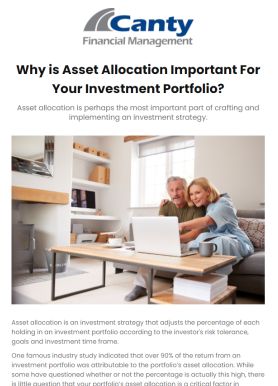
Most investors can get so caught up in the extensive research and due diligence to find the best investments that they forget about one crucial factor- income taxes. Many times, there are great investors who will hit home runs on a stock or fund, but when it comes to income taxes they have no clue where to begin.
There are countless ways to improve investment returns by minimizing the taxability of those investments. In this article, we would like to discuss a few situations where having some tax and financial planning knowledge can help you keep more of your hard-earned money.
Many of us have heard the term tax-loss harvesting before. It sounds straightforward, take losses to reduce your taxes. But how exactly does this really work?
Tax-loss harvesting is the practice of selling a security or multiple securities to realize a paper loss. This is usually done to offset realized capital gains within a tax year.
When selling a position for a loss you will reduce or wipe out your realized gain and/or ordinary income for that tax year. But, be careful, you must not buy back that same security that has incurred the loss within 30 days, or it is considered a wash sale. Wash sales are disallowed losses for tax purposes. The IRS created this rule to reduce the amount of tax loss harvesting done by investors.
Ideally, an investor can use tax-loss harvesting to their advantage. An investor who sells a position at a loss can use that loss to lower their capital gain income or ordinary income up to $3,000 in a given tax year. The investor then has the option to wait 30 days to buy back that security (to avoid a wash sale) or to purchase a similar security.
For example, an investor can sell a technology ETF for a loss and then immediately purchase a different technology ETF within their portfolio. This way they have a very similar asset allocation and investment matrix but have realized a loss for tax purposes.
Income portfolios are great ways for you to earn consistent income from your investments. Whether you are retired or simply risk-averse, there are several reasons to invest in an income-driven portfolio.
There are many different ways to construct income portfolios. Most commonly investors build a portfolio of interest-paying debt and dividend-paying equity to generate income over time. But most investors don’t understand the tax differences between certain dividend-paying stocks and interest income.
Qualified dividends are dividends paid by large U.S. companies that qualify to be taxed at the capital gains tax rate. The law was created as a part of the Bush tax cuts in 2003. Qualified dividends have a major tax advantage when compared to interest income. A qualified dividend can only be taxed up to a maximum of 20%. Whereas interest income is taxed as ordinary income, which can be up to 37% (2019).
When building income-driven portfolios it is important to understand the taxability of the underlying securities. Qualified dividends can be a strategic piece in an income-generating portfolio.
This tip focuses on the asset location strategy of your capital. Asset location focuses on where and what type of account you contribute to and withdraw your investments. This will apply to those investors who are over age 59 ½ and are eligible to take distributions from tax-deferred retirement accounts.
Many investors believe it is best to withdraw investments from regular taxable brokerage accounts before they begin withdrawing from their tax-deferred accounts (IRAs, 401k, etc). The idea is that you will pay less tax early on in your retirement and give your tax-deferred accounts more time to compound returns. This is a very common misconception as it is not as simple as it seems.
There is one big problem with this conventional strategy. Large IRA distributions can drive you into a higher tax bracket. An investor who spends down his taxable brokerage account first and then liquidates his IRA later can inadvertently push themselves into a higher tax bracket later in retirement.
For this reason, the best strategy is to blend your distributions from taxable and tax-deferred accounts in a balanced fashion. This way you are taking ordinary income distributions from your IRA over time and in smaller amounts, with less risk in pushing yourself into a higher tax bracket.
Written by: Ed Canty, CFP®
If you have any questions about coordinating your investments and income taxes please don’t hesitate to reach out.

